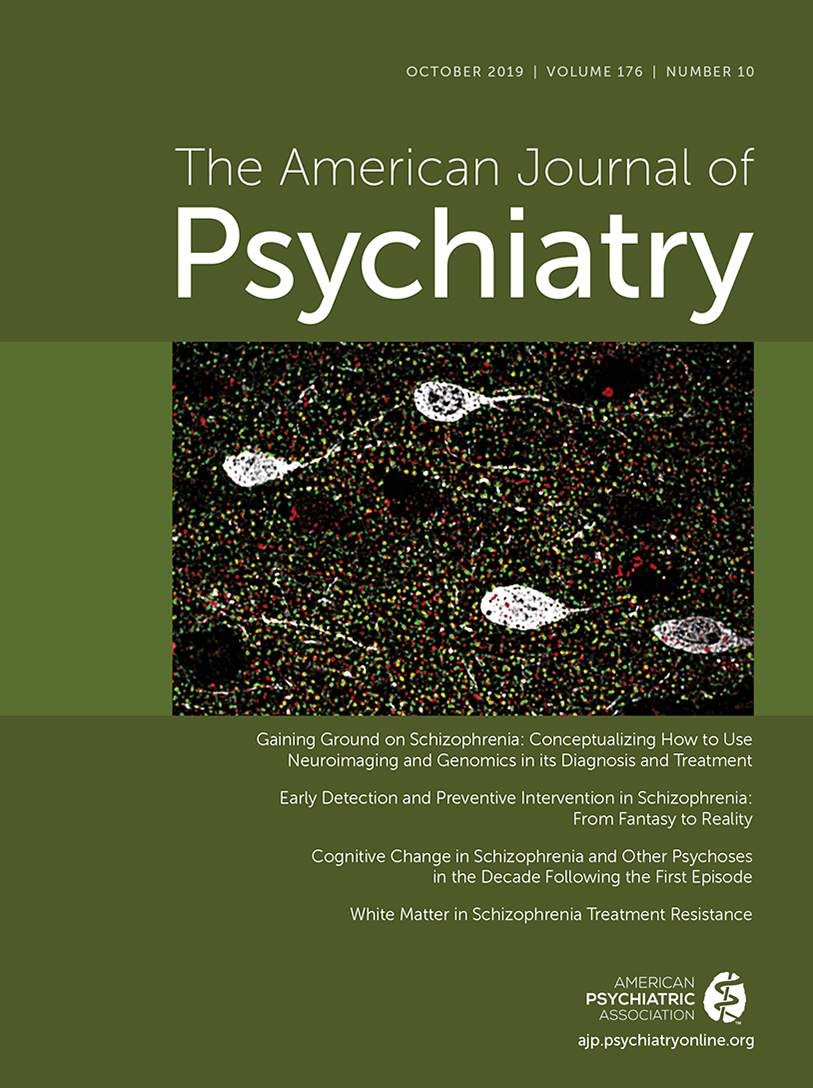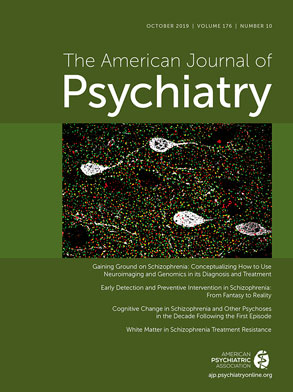Nonpharmacologic Approaches
Once delirium has developed, nonpharmacologic approaches are integral to limiting overall morbidity and mortality, including risk of long-term cognitive impairment. There is significant overlap between the nonpharmacologic strategies used in prevention and those used in treatment. These strategies target sleep-wake regulation, orientation, early mobilization, vision and hearing optimization, and nutrition and hydration. In the critical care setting, the scope of intervention expands to include daily trials of sedation reduction and spontaneous ventilation, as delineated in the ABCDEF bundle (
53), an evidence-based guide for optimizing ICU patient recovery. The ABCDEF bundle’s components include assessing, preventing, and managing pain; both spontaneous awakening and spontaneous breathing trials; choice of analgesia and sedation; delirium assessment, management, and prevention; early mobility; and family engagement (
53). A prospective study comparing complete ABCDEF bundle performance to proportional performance (
54) demonstrated that complete performance was associated with decreased risk of hospital death within 7 days (adjusted hazard ratio=0.32, 95% CI=0.17–0.62), delirium (adjusted odds ratio=0.60, 95% CI=0.49–0.72), and coma (adjusted odds ratio=0.35, 95% CI=0.22–0.56). The ABCDEF bundle is an example of a proactive, interdisciplinary approach for mitigating delirium risk factors as well as assessing for and managing delirium. Psychiatrists can play an important role in advocating for and implementing proactive, multidisciplinary prevention programs and clinical pathways within their local institutions.
There is only limited high-quality evidence in the literature addressing nonpharmacologic treatment of delirium, highlighted in a recent systematic overview in older patients (
55). Both single and multicomponent protocols have undergone trials, from bright lights, earplugs, and music therapy to more comprehensive team-based approaches that can extend to family engagement (
55). The evidence for multicomponent nonpharmacological interventions preventing delirium is currently much stronger than that for the treatment of already established delirium. The primary treatment of delirium is identification and management of the underlying medical etiologies, which may be highly variable within and across treatment populations, and multimodal treatment strategies to minimize the severity and duration of delirium are thus essential.
Antipsychotics
While there are no medications approved by the U.S. Food and Drug Administration (FDA) for the treatment of delirium, antipsychotics are commonly used as a first-line pharmacologic approach to manage symptoms that threaten safety or impede care when nonpharmacologic approaches are insufficient. The efficacy of antipsychotic medications for the treatment of delirium is controversial. Although some studies suggest that the benefits of using antipsychotics outweigh the risks when used to manage specific target symptoms (e.g., agitation, paranoia, psychosis) (
56,
57), a recent meta-analysis (
43) found that antipsychotics demonstrated no significant effect on delirium incidence, duration, severity, length of stay, or mortality. While the current evidence regarding the effect of antipsychotics on duration of delirium is unclear, we do not yet have studies demonstrating the impact of antipsychotics on other meaningful patient measures often seen in delirium, such as emotional distress, ability to participate in care, and long-term functional outcomes.
In the absence of conclusive data, it is recommended that antipsychotic use be limited to judicious, time-limited trials for the management of high-risk and high-distress symptoms of delirium, including agitation, paranoia, and hallucinations, which pose a safety risk to the patient or staff or impede the provision of medical care (
Table 1) (
58). Antipsychotics can be helpful for treating clear psychotic symptoms associated with delirium, such as hallucinations, delusions, and paranoia. The sedative effects of antipsychotics can also be helpful for the acute management of agitation. It should be noted, however, that there is no clear evidence that antipsychotics have an impact on the core attentional or cognitive symptoms of delirium. Furthermore, it is critical that antipsychotic trials include careful monitoring for both treatment response and side effects. The selection of the antipsychotic agent may be guided by the agent’s pharmacodynamic and side effect profile to maximize benefit for the unique clinical presentation. For example, patients with profound circadian disturbances and perceptual disturbances may benefit from sedating antipsychotics, such as quetiapine, dosed primarily at nighttime. Patients with hyperactive delirium characterized by rapidly escalating agitation may benefit from haloperidol, which is available in intravenous and intramuscular formulations and can be administered to patients who cannot safely receive oral medications. Patients with Parkinson’s disease or Lewy body dementia are best treated with quetiapine, as first-generation and high-potency antipsychotics can worsen Parkinson’s motor symptoms. If a patient with Parkinson’s disease or Lewy body dementia requires a parenteral medication, intramuscular olanzapine or ziprasidone should be administered at the lowest effective dose. Individuals who are unable to swallow tablets may benefit from agents with oral disintegrating formulations, such as olanzapine and risperidone. Delirious cancer patients often benefit from the antiemetic properties of olanzapine.
In terms of dosing, as-needed daytime doses can be initiated, as well as either an as-needed or a standing bedtime dose, depending on symptom severity. Frequent use of as-needed doses should prompt initiation of standing doses at the lowest effective dose and frequency. If the patient demonstrates only partial response, doses may be gradually titrated upward, as long as daily maximum limits are not exceeded. As the patient begins to improve, standing daytime doses should be transitioned back to as-needed doses, reserving the standing bedtime dose as the last to be transitioned back to as-needed.
The three main risks associated with antipsychotic use include QTc prolongation (which increases the risk of sudden death by torsade de pointes), extrapyramidal symptoms, and increased all-cause mortality in elderly patients with dementia. While QTc prolongation is commonly observed with antipsychotic medications, the absolute increases are modest. A study performed for the FDA by Pfizer comparing the QTc interval before and after exposure to the maximum recommended daily doses of commonly used antipsychotic medications demonstrated QTc prolongation ranging from 4.7 ms (with haloperidol) to a maximum of 20.3 ms (with ziprasidone) (
59). The FDA placed a black box warning on droperidol in 2001, indicating a significant risk of QTc prolongation and cardiac arrhythmias. Many experts questioned the validity of this warning after its issuance, and a recent evidence-based review indicated that the risk of torsade de pointes is low when doses less than 10 mg are administered (
60). Patients receiving antipsychotic medications during periods of delirium should have an ECG before therapy is initiated as well as after initiation to ensure that the QTc interval has not significantly lengthened. Routine monitoring of the QTc interval becomes even more critical in patients who have known heart disease and in patients receiving other QTc-prolonging medications. The incidence of torsade de pointes is 10–15 events per 10,000 person-years of observation, making it a high-risk but low-frequency incident (
61). Optimization of electrolytes, particularly potassium, magnesium, and calcium, can minimize antipsychotic-associated QTc prolongation. Potassium shortens the QTc interval, and magnesium suppresses recurrent torsade de pointes without shortening the QTc interval (
62).
Patients receiving antipsychotics must also be monitored for extrapyramidal symptoms, as akathisia, rigidity, and dystonias may exacerbate the underlying restlessness and disorientation seen in delirium. Akathisia is most commonly observed in patients receiving high doses of first-generation antipsychotics, although the risk of developing akathisia appears to be attenuated in patients receiving 4.5 mg/day or less of haloperidol, as well as those receiving second-generation antipsychotics (
57). Patients experiencing rigidity must be monitored for the development of neuroleptic malignant syndrome, an uncommon but life-threatening condition following exposure to antipsychotic medications that is characterized by lead-pipe rigidity, elevated creatine kinase levels, fever, mental status changes, and autonomic instability (
63). The differential diagnosis for neuroleptic malignant syndrome includes malignant catatonia and serotonin syndrome. The development of such symptoms should prompt immediate discontinuation of antipsychotics, as well as escalation of care to an ICU setting for close monitoring and supportive treatment, including aggressive volume resuscitation, electrolyte correction, and temperature regulation. In severe cases, additional treatment options would include benzodiazepines, dopaminergic agents, dantrolene, or electroconvulsive therapy (6–10 bilateral treatments) (
64).
The FDA has issued black box warnings cautioning against the use of antipsychotic medications in elderly patients with dementia, indicating that antipsychotics are associated with increased all-cause mortality in this population (
65). However, it is critical to distinguish the practice of using the lowest effective dosage of an antipsychotic for a limited period in delirious patients in a carefully monitored medical setting from the higher cumulative antipsychotic exposure observed among patient populations on which the original safety warnings were based. A subsequent study specifically examining the rate of adverse events that could be attributed to antipsychotic use among some 2,400 medical inpatients who developed delirium (
66) did not find a higher mortality rate among patients receiving antipsychotics. However, a 2017 prospective placebo-controlled study of elderly patients receiving palliative care (
67) demonstrated a higher survival rate among patients receiving placebo than among those receiving haloperidol. Additional multicentered, placebo-controlled studies are necessary to elucidate the risks and benefits of antipsychotic therapy in patients with delirium, as it is difficult to generalize these findings to the larger, heterogeneous, nonpalliative patient population. It cannot be emphasized strongly enough that patients receiving antipsychotics to target symptoms of delirium while in the hospital must either be fully tapered off of those agents before discharge or must have a clear discontinuation plan, as it is not uncommon for these medications to be inadvertently continued indefinitely after discharge.

